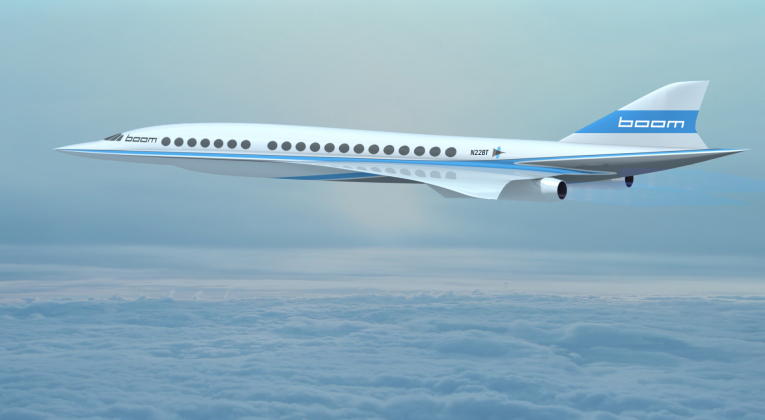The latest entrant in what is growing to become a crowded field of supersonic aircraft promises airplanes which will fly faster than Concorde — and at $5,000.00 each way between New York and London; $6,500.00 between San Francisco and Tokyo; and $7,000.00 between Los Angeles and Sydney, which are the current prices of some business class tickets for transoceanic flights — supersonic travel will purportedly be more affordable than Concorde.
Affordable Supersonic Travel? Boom!
Billed as the fastest passenger airplane ever, Boom claims at its official Internet web site that supersonic travel will become a reality: in addition to advanced design software and wind tunnel tests, “This isn’t science fiction — it’s possible now with today’s aerodynamics, carbon fiber composites, and the latest engine technology.”
The prototype aircraft — currently being built in a hangar in Denver by a “dream team” of twelve people comprised of experienced engineers, pilots, and hands-on builders who are grounded in physics and pushing technology to new heights by making key contributions to 30 new aircraft and conducted test flights to Mach 3 — will supposedly fly late next year with test flights at Centennial Airport south of Denver; and supersonic test flights near Edwards Air Force Base in California.
Boom is supposedly a misnomer for the name of the company, as the aircraft is not only expected to be significantly quieter than Concorde and its sonic boom; but it is also expected to be up to 30 percent more fuel efficient than Concorde.
At Mach 2.2 or 1,451 miles per hour, the aircraft developed by Boom is expected to be faster than Concorde, which flew at Mach 2.0; and 2.6 times faster than a typical airplane which travels at a speed of Mach 0.85.
Blake Scholl — who is the founder and chief executive officer of Boom; as well a a pilot and former executive at Amazon — believes that affordable supersonic flights could potentially become a $100 billion market due to so much pent-up demand for faster international travel; and that the airplane could potentially fly on 500 different routes. A partnership has already been established with Richard Branson and Virgin Group — of which he is the founder and chief executive officer — where an option was signed to purchase ten of the airplanes.
Although there is no definitively specific date at this time, supersonic flights with airplanes manufactured by Boom could occur in as soon as a few years — hoping to beat to the market similar offerings proposed by a partnership between Aerion Supersonic and Airbus Group; as well as proposed by a partnership between Lockheed Martin and the National Aeronautics and Space Administration of the United States, which has supposedly progressed one step closer to supersonic travel becoming a reality.
There is even a company which claims that it has plans for an airplane which can travel at up to approximately 12 times the speed of Concorde where it would be able to fly from New York to London in eleven minutes; New York to Dubai in 22 minutes; and New York to Sydney in 32 minutes…
…and this does not even include the assorted futuristic technologies about to which is referred in this article where you could travel from New York to Beijing in as few as two hours; or this article pertaining to possibly one day traveling from London to New York in approximately one hour; or this article where passengers can be transported between Toronto and Montréal in as few as 30 minutes with Hyperloop technology.
Summary
Concorde supposedly failed because tickets were expensive — as well as maintaining the fleet of aging aircraft.
Supersonic travel is still “vaporware” at this point; but one can hope that it will return in some form — and hopefully, more affordably…
Source: Boom.




A supersonic carrier is a real GoGo.